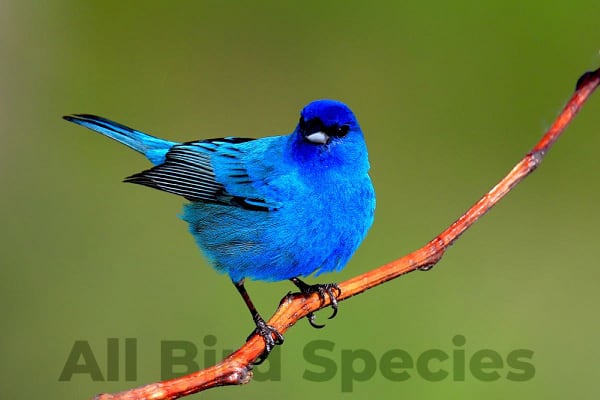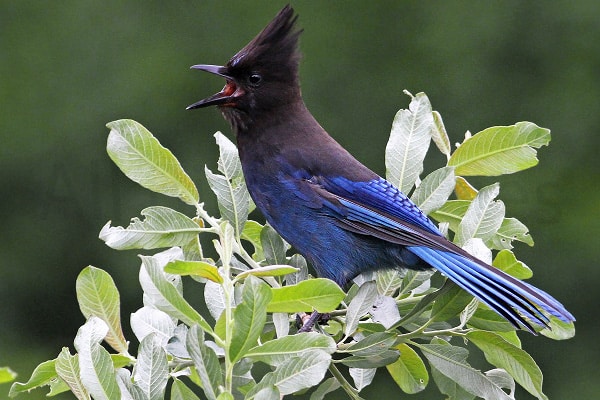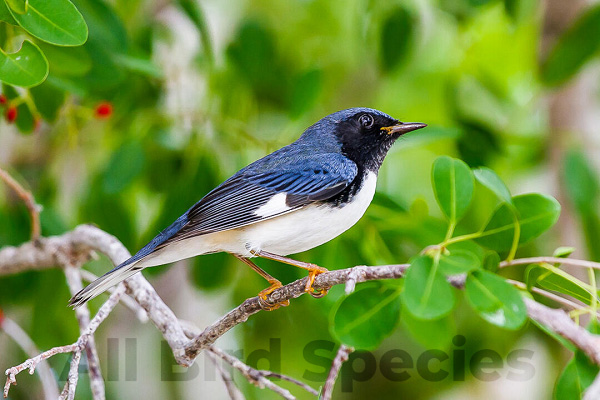16 Types of Blue Birds (With Photos)
Did you know over 20% of types of birds species show blue colors? This makes blue birds some of the most interesting in nature. We’ll explore 16 different blue bird species in North America. They range from those with bright feathers to those with unique behaviors.
We’ll give you tips on identifying blue birds and show you their beauty. Join us as we discover the variety of blue birds in our skies.
Introduction to Blue Birds
We are drawn to the unique beauty of blue birds. They stand out among many bird species. Their rare blue plumage makes them special to bird lovers and casual watchers.
Their vibrant colors and unique songs add to their charm. Different blue birds show a wide range of traits. From the Eastern Bluebird’s song to the Mountain Bluebird’s look, they show the diversity of blue birds.
Blue birds live in many places, from dense rainforests to quiet neighborhoods. They can live in different areas because they are adaptable. Learning about their habitats helps us understand their lives better and appreciate them more.
The Science Behind Blue Plumage
Looking into the blue plumage of birds shows us a fascinating part of bird biology. The blue color comes not from pigments but from light scattering in birds. This happens inside the feathers, which are made of tiny air pockets and keratin.
When light goes through these feathers, it meets the tiny parts. Longer wavelengths like red and yellow get absorbed. But shorter wavelengths, mainly blues, bounce back. This is why we see the bright blue colors in many birds.
The blues in blue birds can look very different. The way the layers in the feathers are arranged and their thickness affect the color. We see everything from deep blues to soft blues. The light around us also changes how we see these colors.
| Bird Species | Primary Blue Shade | Feather Structure Feature |
|---|---|---|
| Eastern Bluebird | Bright Blue | Layered Barbs |
| Blue Jay | Sky Blue | Interlocking Barbules |
| Indigo Bunting | Indigo Blue | Modified Melanin |
| Mountain Bluebird | Soft Blue | Thin Feather Layers |
Types of Blue Birds
We explore three amazing blue bird species in North America: the Eastern Bluebird, Western Bluebird, and Mountain Bluebird. Each has its own unique features. They are a joy for birdwatchers and nature lovers.
1. Eastern Bluebird (Sialia sialis)

The Eastern Bluebird is known for its bright blue head and orange underparts. These colors stand out in its favorite spots, like open fields and gardens. It eats insects, fruits, and berries, showing how it adapts to different seasons.
2. Western Bluebird (Sialia mexicana)

The Western Bluebird has a dark blue head and orange flanks. It lives in open woodlands and shrubs in the western U.S. Its diet is mostly insects, but it also eats fruits, especially during migration.
3. Mountain Bluebird (Sialia currucoides)

The Mountain Bluebird has a beautiful electric blue color. It lives in the mountains, in areas with little vegetation. These birds mainly eat insects, helping to control insect populations. Seeing them in their natural habitat is truly inspiring.
Other Fascinating Blue Birds
We’re diving deeper into the world of blue birds with the Blue Grosbeak, Indigo Bunting, and Steller’s Jay. Each bird has its own unique traits and behaviors. They show the wide range of characteristics within the blue bird group.
4. Blue Grosbeak (Passerina caerulea)

The Blue Grosbeak is known for its bright blue feathers. It’s a beautiful sight in fields and shrublands. It has special wing bars that make it even more eye-catching.
This bird lives in the southern and western parts of the United States. It loves dense shrubs where it finds seeds and insects. This gives us a peek into its eating habits.
5. Indigo Bunting (Passerina cyanea)

The Indigo Bunting is a sight to behold with its deep blue feathers during breeding season. These birds live in forest edges and weedy fields. Their bright color helps them stand out and attract mates.
They’re also known for their beautiful songs. This adds to their charm and makes them a joy to listen to.
6. Steller’s Jay (Cyanocitta stelleri)

Steller’s Jay is known for its size and bold nature among blue birds. It has a big crest and lives in the forests of western North America. These birds are smart and love to forage for food in campsites or bird feeders.
Their black and blue feathers make them stand out. This striking look catches our eye and makes them memorable.
| Species | Habitat | Diet | Distinctive Features |
|---|---|---|---|
| Blue Grosbeak | Fields and shrublands | Seeds and insects | Bright blue plumage, wing bars |
| Indigo Bunting | Forest edges and weedy fields | Seeds, insects, and berries | Striking blue feathers, melodic song |
| Steller’s Jay | Forested regions | Seeds, insects, and food scraps | Large size, crest, black and blue coloring |
7. Blue Jay (Cyanocitta cristata)

The Blue Jay is types of Blue Birds known for its bright blue feathers and smart ways. They can copy the sounds of different predators, which helps them stay safe. They also have a social side, often chatting and working together in groups.
8. Black-throated Blue Warbler (Setophaga caerulescens)

The Black-throated Blue Warbler is a sight to see with its bright colors and interesting migration patterns. It lives in dense forests where it finds lots of food and shelter. This bird is special not just for its looks but also for helping the environment by spreading seeds and pollinating plants.
Habitats of Blue Birds
Learning about the homes of blue birds is key for bird lovers. These birds live in many places, making them easy to find. They like fields, woods, and even cities, showing how flexible they are. Knowing where to look helps us enjoy their bright colors and happy songs.
Where to Find Blue Birds
Blue birds can be found in great spots. Some top places include:
- Nature reserves with open fields for nesting.
- Public parks that have trees and food.
- Gardens with native plants that draw insects.
- Rural areas with farms full of insects and seeds.
Going to these places in late spring and summer boosts our chances of seeing these lovely birds.
Feeding Habits of Blue Birds
Bluebirds have interesting eating habits that show their importance in nature. They mainly eat:
- Insects like beetles and caterpillars for protein.
- Fruits like berries for carbs.
- Seeds, especially in fall and winter.
Each bluebird species has its own way of finding food. Some pick it up from the ground, while others catch insects from low spots. Knowing this helps us make our yards more inviting for bluebirds.
Conservation of Blue Bird Species
Protecting bluebirds is key to keeping nature in balance and saving different species. Many blue birds are facing threats like losing their homes, cities spreading out, and changes in the weather. We need to work together to protect their homes. By understanding what they need and helping to save their homes, we can make ecosystems healthier.
Protecting Their Habitats
Keeping natural places safe for blue birds is important. This means saving forests, grasslands, and wetlands. We can lessen the harm of cities and farms on their homes. Making safe areas and fixing damaged habitats helps blue birds have good places to live and find food.
Blue Bird Watching Best Practices
Following bird watching rules is key to not bothering blue birds and their homes. Here are some tips:
- Keep a safe distance to not stress the birds.
- Use binoculars and spotting scopes to watch instead of getting too close.
- Stick to marked paths to avoid hurting plants.
- Leave no trace to keep habitats safe.
Related Articles:
| Blue Birds of North America |
| Blue Birds in Pa |
| Spiritual Meaning of Blue Jay Birds |
| Blue Colored Birds |
| Blue Jay Sign From Heaven: A Spiritual Message |
Wrapping Up…
As we end this article, let’s look back at the types of blue birds that fill our skies. From the Eastern Bluebird to the Steller’s Jay, each bird has its own special traits. These traits make our world richer and help us connect with nature.
Learning about blue birds shows us why we need to protect their homes. By exploring their habitats, we learn more and help protect them. Seeing blue birds up close makes us value and fight to save their beauty.







